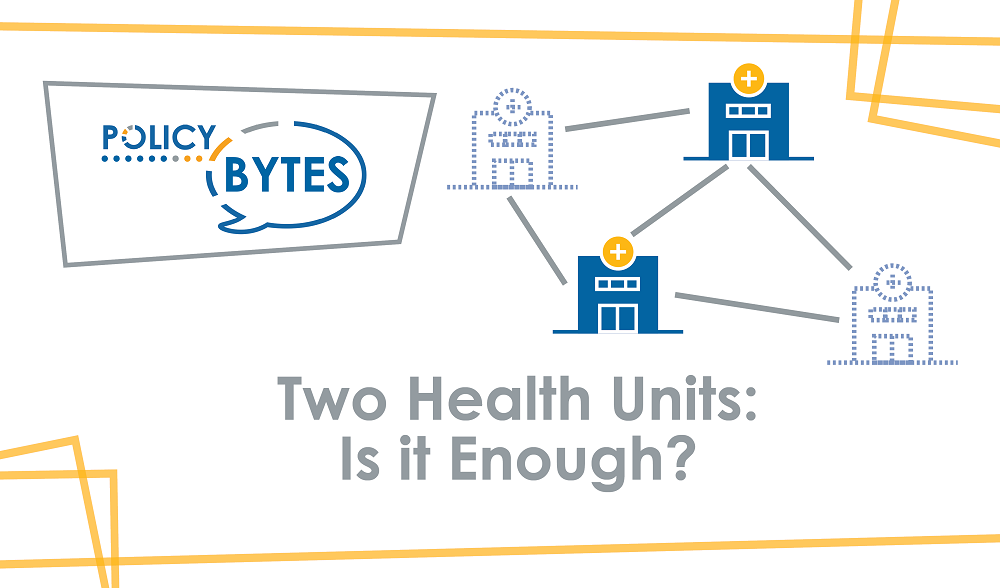Two Health Units: Is it Enough?
September 17, 2019 - The Government of Ontario has been clear in its desire to reduce the deficit, cut spending, and streamline service delivery, and the 2019 budget included expansive plans intending to do exactly that. One sector that has faced government scrutiny has been health care which they have defined as being disconnected and uncoordinated.

One initiative announced in the budget that aims to improve functionality and reduce healthcare spending would involve the consolidation of Public Health Units. The plan would see the province’s current 35 Health Units reduced into 10; the 9 that currently operate in Northern Ontario would shrink to 2, one for the Northwest and one for the Northeast. The changes are also to be accompanied by a $200 million cut to Health Unit funding. The government has assured that creating fewer Units with larger jurisdictions will allow the entities to operate with greater coordination and the resulting efficiencies will ensure service quality and delivery is maintained despite the lower spending amount.
The complexity and inefficiency of the Ontario health care system is a common critique of the status-quo, prompting some health care workers to welcome the plan. The medical officer of health for the Middlesex-London Health Unit, Dr. Chris Mackie, is optimistic that having larger-scale units will improve coordination and integration of programs and services across regions. The budget asserts that Units will be able to focus resources towards “providing better, more efficient frontline care.” The government will also be carrying out further consultation with relevant stakeholders before finalizing any implementation plans.
However, skepticism remains over what the implications of the reforms will be for the quality and accessibility of services, particularly for the northern regions. Northern Ontario stands to be impacted particularly hard given the geography assigned to the proposed two northern units. Northern Ontario constitutes the majority of the province’s land area while maintaining a very low population density with rural and remote communities peppered throughout. Certain health services may not be easily available within these communities, making accessibility a primary concern as residents must find ways to travel to regional hubs for service. People are also less likely to have a regular health care provider or be capable of seeing their provider on the same or next day.[i] Alternative methods of service delivery, like e-medicine, face similar accessibility issues in rural communities due to the lack of required infrastructure such as broadband connection. Health care funding metrics are often population based, meaning the small communities that may already have low accessibility could lose out on existing services or on opportunities for improved services. It also leaves municipalities to provide more funding, further burdening communities with small economies. Addressing these problems require infrastructure investment and revised funding models.
There is also worry that having such expansive organizations will prevent communities from having their individual needs met. Smaller regions often face differing challenges requiring specific services and programming, leaving some stakeholders fearing for the future of local needs-based prioritization. For example, communities within the same region may have different demographic or language needs. To maintain needs-based programs and services, communication and unity must be developed between staff and local stakeholders. Larger organizations can not only lose these community connections, but are also more likely to focus on regional or provincial priorities over local ones. Maintaining local connections could presumably be achieved with a larger organization provided that permanent locations were established or retained in communities across the Units’ jurisdictions.
The plan’s details and implementation strategies will play a key role in determining how effective it proves to be. While the budget states the government’s recognition of this concern and asserts the plan will only improve flexibility, it is unclear exactly how this would happen. The lack of differentiation of social and geographical needs points towards a concerning result primarily for rural and remote regions of the North, even when disregarding the budget cuts. The CEO of the North West Health Unit Dr. Kit Young Hoon doesn’t believe that the consolidations will lead to significant savings given the existing efficiency and collaboration between the Units. Comparisons have also been drawn to Alberta Health Services, which was designed in 2008 with similar intentions. The plans to streamline health services under a larger single entity was employed to improve efficiency but has resulted in inflating costs. One potential reason for the higher price tag stems from the degree of administration required to coordinate actions and priorities between communities with different circumstances and that are geographically distant. Given the huge area within the boundaries of the proposed Northern Health Units, the administration required could be expansive. Even if there are savings that come from the merge, Alberta’s experience has shown that health outcomes significantly worsened, stoking fears that Health Units will face reduced capacity to conduct vital services.
Ultimately, while the amalgamation of Public Health Units may provide added efficiency in Southern Ontario, the northern regions may face troubling challenges and losses in both service quality and delivery. The basic and necessary services that are provided by Public Health Units are simultaneously very important and easily unrecognized, and serve to help reduce burdens on an already overburdened healthcare system. With a smaller budget, high administrative costs, and little room for reduced programming, it is difficult to imagine an implementation design that adequately meets the needs of all of Northern Ontario’s communities.
[i] HQO reports that people in the Northwest and Northeast LHINS who do not have a regular health care provider is 83.8 and 89.2 percent, respectively. For Ontario overall it is 93.8 percent. Similarly, for those aged 16+ in the Northwest and Northeast LHINS that are unable to see their primary care provider on the same or next day when they are sick is 23 and 28.2 percent, respectively. For Ontario overall it is 43.6 percent.
Gabriella Rabaa was a Summer Policy Analyst at NPI.
Thank you to our Experience North Sponsor 
The content of Northern Policy Institute’s blog is for general information and use. The views expressed in this blog are those of the author and do not necessarily reflect the opinions of Northern Policy Institute, its Board of Directors or its supporters. The authors take full responsibility for the accuracy and completeness of their respective blog posts. Northern Policy Institute will not be liable for any errors or omissions in this information, nor will Northern Policy Institute be liable for any detriment caused from the display or use of this information. Any links to other websites do not imply endorsement, nor is Northern Policy Institute responsible for the content of the linked websites.
Northern Policy Institute welcomes your feedback and comments. Please keep comments to under 500 words. Any submission that uses profane, derogatory, hateful, or threatening language will not be posted. Please keep your comments on topic and relevant to the subject matter presented in the blog. If you are presenting a rebuttal or counter-argument, please provide your evidence and sources. Northern Policy Institute reserves the right to deny any comments or feedback submitted to www.northernpolicy.ca that do not adhere to these guidelines.
